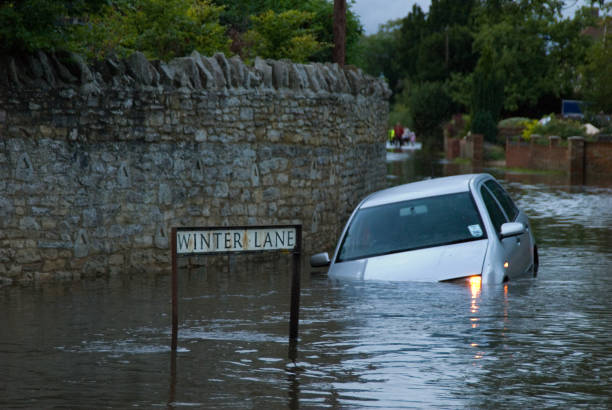Engineers have backed an Environment Agency campaign aimed at encouraging householders to make their own flood-defense interventions — but called for an increase in training and understanding. Key figures said the move, launched this week in conjunction with insurance initiative Flood Re, was an “important” part of the broader fight against water damage as a result of climate change. The Be Flood Smart campaign urges individuals to undertake works such as raising electrical sockets, installing self-close air bricks and replacing non-waterproof flooring. It is estimated that undertaking property flood resilience measures can reduce the cost of repair works after a major incident by more than 70% Royal Has Koning DHV flood and coastal management advisor Jaap Floweret described the campaign as a “positive step” Property flood resilience in the past have been mostly driven by government grants, so it’s good if this helps in its mainstreaming,” he told NCE. “We need to get to a situation where the homeowners and insurers recognize that it’s a worthwhile investment for themselves: where the benefits of reducing flood damages outweigh the costs.” Householder interventions represented a “very useful” element of a wider portfolio of flood-management measures, Floweret added. This had to include formal engineered defenses as well as community awareness, emergency response, nature-based solutions and land-use planning.

But He Called For Property Flood Resilience To “Come With a Good User Manual”.
“Some products are passive whereas others need to be installed when the flood is approaching,” he pointed out. “Also, they typically only work up to around 800mm of flood depth.” Experienced floods practitioner Foal Ogunyoye, currently director of TJAY Consultancy, agreed that householder-led measures were “definitely an important part” of risk management in his area. “Property flood resilience particularly comes into its own when more strategic solutions that protect whole communities are not technically feasible or affordable, or to mop up residual risk,” he said. “It is now clear that with increasing climate change impacts, we can not build higher and stronger defenses everywhere, hence the focus on flood resilience by the Environment Agency’s Flood and Coastal Erosion Risk Management strategy.” Even where major projects are identified as necessary to protect communities, they can take centuries to plan, fund and deliver, said Ogunyoye. “Retrofitting resilience to existing development is very important and deserves a lot of attention. Property flood resilience plays an important role within this.” He called for an increase in training to ensure the skills were on the ground to deliver the works required. “It is important that property flood resilience is not sold as something just to be bought from B&Q and self-fitted. “It is important that an engineer or surveyor who understands the risk of flooding, structure of buildings and possible entry points of water into a property is involved in a property survey to understand the routes of entry and appropriateness of potential property flood resilience measures. “There is no point spending £10,000 to fill in five entry points on the walls, while not realising there is a sixth one, say, through a suspended wooden floor.

“Capacity Building To Deliver property Flood Resilience.
is an ongoing activity and needs to be ramped up to ensure effective delivery. Some property flood resilience training is being developed and rolled out, but this still has a long way to go.” According to Flood Re, one in six people in England are now at risk of flooding, with the average repair cost to a homeowner estimated at more than £30,000. The body launched its campaign this week at the new Be Flood Ready property flood resilience center in Oxford shire, a dedicated demonstration and training facility. Flood Re chief executive Andy Board said: “More frequent and more damaging flooding is one of the ways the climate crisis is having a very real impact on households across the UK. We need to take urgent action to adapt to a warmer and wetter planet and reduce that risk. “There are simple and cost-effective steps homeowners can take to protect their homes and the things they love from floods – and we want to inspire more people to do just that.” Environment Agency chair Alan Lovell added: “Flooding can be devastating – particularly when people’s homes and possessions are ruined. “We have committed through our Flood and Coastal Erosion Risk Management Strategy to work closely with partners to help make property flood resilience a mainstream approach. This will have the benefit of reducing the risk of flood damage to individual properties and helping people move back into their properties quicker after flooding. “With climate change making extreme weather events increasingly likely, it’s essential that we all work towards making properties and communities more flood and climate-resilient. The joint campaign with Flood Re and the Environment Agency will show property owners that flood resilience measures can be built into their home in a cost-effective way.”


Recent Comments